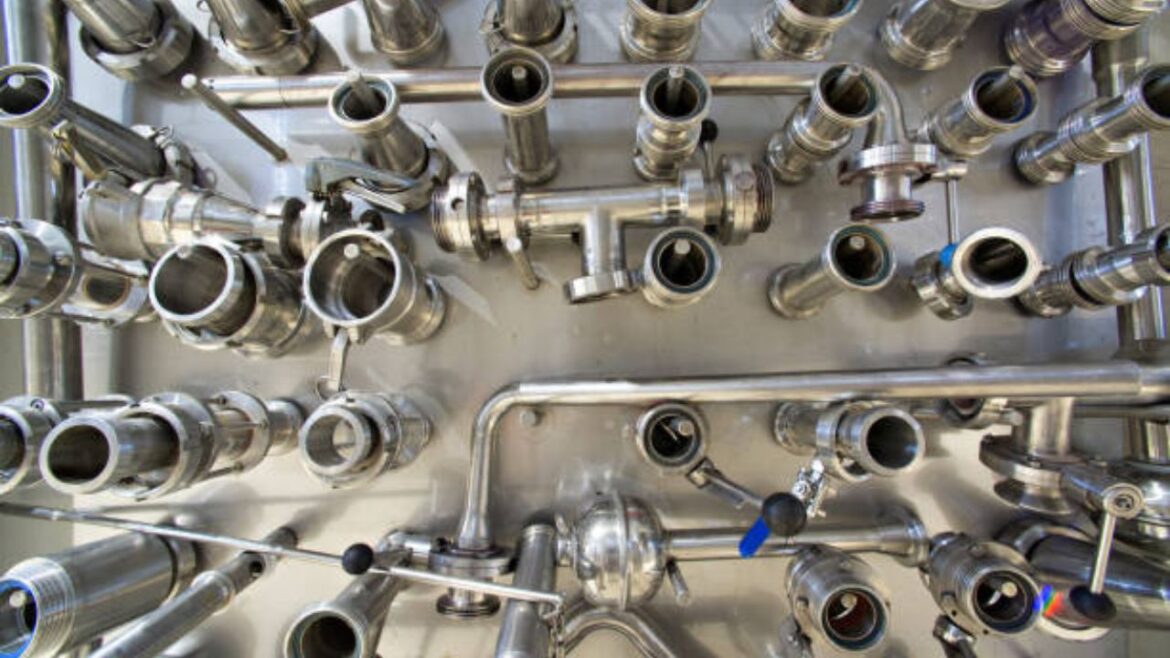When we talk about advanced manufacturing, biotech, brewing, or food processing, the conversation often revolves around reactors, control systems, or sterilisation protocols. Rarely does the spotlight fall on something as modest as a tube, a valve, or a clamp. Yet these components—the sanitary fittings—play a pivotal role in making sure that what goes through your system stays clean, uncontaminated, and safe.
What Makes a Fitting “Sanitary”?
Unlike generic pipe parts, sanitary fittings are engineered with hygiene as a nonnegotiable requirement. That means:
- Smooth internal surfaces, with minimal crevices or weld beads where bacteria or residue could accumulate
- Tight tolerances and clean finishes, so seals fit perfectly and there’s no leakage
- Materials compatible with harsh cleaning agents, such as caustics, acids, or oxidisers
- Compliance with industry standards, which define how cleanable, inspectable, and maintainable components must be
In practice, these attributes reduce risk of microbial growth, cross-contamination, and unplanned downtime.
Material Choices: Why Stainless Steel (304 or 316L)?
Stainless steel has long been the workhorse in sanitary systems, and for good reason:
- It tolerates frequent cleaning cycles without significant degradation
- The passive chromium-oxide surface resists corrosion and prevents rust contamination
- Grades like 316L (a low-carbon variant) offer enhanced resistance in aggressive or corrosive environments
- It accepts high polish finishes, further limiting places for residues to hide
Of course, cost, strength, and service conditions also play into whether 304, 316L, or other alloys are the best fit.
Types of Sanitary Fittings & Their Roles
Depending on the layout and cleaning protocols, different fitting types serve distinct roles:
- Tri-Clamp: Easy to assemble and clean, widely used in food and beverage systems
- Weld fittings: Provide permanent, smooth transitions with no internal gaps
- Elbows, tees, reducers: Change flow direction, split flow, or adapt diameters
- Valves and sample ports: Essential for control, sterilisation, and sampling
- Gaskets and seals: Made from FDA-approved elastomers, crucial for leak-free systems
Each fitting must balance performance, hygiene, and durability.
Sanitary Systems in Action
Consider a few real-world demands:
- Clean-in-place (CIP): Fittings must endure strong cleaning agents, pressure swings, and repeated cycles
- Steam-in-place (SIP): Components must withstand high temperatures and thermal stress
- Biopharmaceutical production: Even trace contamination can ruin batches, so fittings must meet the strictest standards
- Breweries and dairies: Frequent product changeovers mean fittings must support quick disassembly and cleaning
Innovations in Sanitary Fittings
The industry continues to evolve:
- Surface treatments that make cleaning even more efficient
- Modular systems that allow facilities to adapt quickly
- Embedded sensors for real-time monitoring of pressure or flow
- Greater focus on sustainability and recyclability in materials and cleaning processes
Common Pitfalls to Avoid
Even with the right parts, issues can arise:
- Hidden crevices from poor welds
- Gasket material breakdown from chemical exposure
- Flow dead zones that resist cleaning
- Material mismatches leading to corrosion
- Lack of documentation for audits or compliance
The Role of a Trusted Partner
Behind every successful sanitary system is a reliable supply chain. Choosing a supplier that understands sanitary standards and maintains dependable inventory is key to avoiding downtime and quality issues.
For those in industries where hygiene and reliability are non-negotiable, Duva Sanitary provides stainless steel sanitary tubing, fittings, and valves designed to keep production running smoothly and safely.

